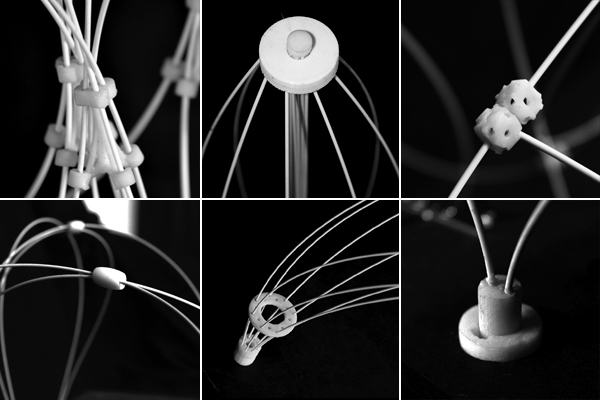Rapid prototyping, or more commonly called 3d printing, is a technique which relies on the addition of material, an additive process, which contrasts with the technology used in the other two assignments, the laser cutter and the milling, which are based on subtractive techniques. As a consequence, this technology has the potential to be waste free. Additive manufacturing can make use of a relatively large palette of materials in a field which is constantly evolving. For the sake of the course, we will be printing with the Projet 1500 (Photosensitive Resin). The scale of the parts produced is still a strong constrain in school and elsewhere, but teams around the world are working on braking these barriers to print objects on a human scale with better performing materials.
Goal of this course
Discover 3d printing technology by producing 3d printed pieces on the machines available in the IAAC. Learn to model, prepare, export and check the file to be fed to the machine. Learn to operate the 3d printers.
Explore the design opportunities arising from the potential and limitations of the technology.
Discover 3d printing technology by producing 3d printed pieces on the machines available in the IAAC. Learn to model, prepare, export and check the file to be fed to the machine. Learn to operate the 3d printers.
Explore the design opportunities arising from the potential and limitations of the technology.
The assignment
To create a dynamic assembly of rods linked together by 3d printed joinery pieces. This assembly should take advantage of the elastic nature of the tubes in order to form two geometrical moments as different as possible from each other’s.
To create a dynamic assembly of rods linked together by 3d printed joinery pieces. This assembly should take advantage of the elastic nature of the tubes in order to form two geometrical moments as different as possible from each other’s.
Each of the 25 groups will have to design and produce an individual assembly composed of:
- - A 10 mm thick black mdf board of 600*600mm, supplied by the school.
- - A maximum of 10 rods, 1 m long, 2 mm diameter, supplied by the school
- A series of 3d printed joints within a maximum bounding box of 100mm*50mm*50mm, printed by students with the assigned machine.
The design process will necessitate both physical and digital testing. The groups should to not wait for their printed pieces to start doing physical testing. Concerning the digital investigation, this exercise will lead the students to explore notions of tangency alignments and the concept of geometrical continuity
Faculty: Edouard Cabay / Alexandre Dubor / Anastasia Pistofidou.
Assistants: Robert Garita / Chirag Rangholia

